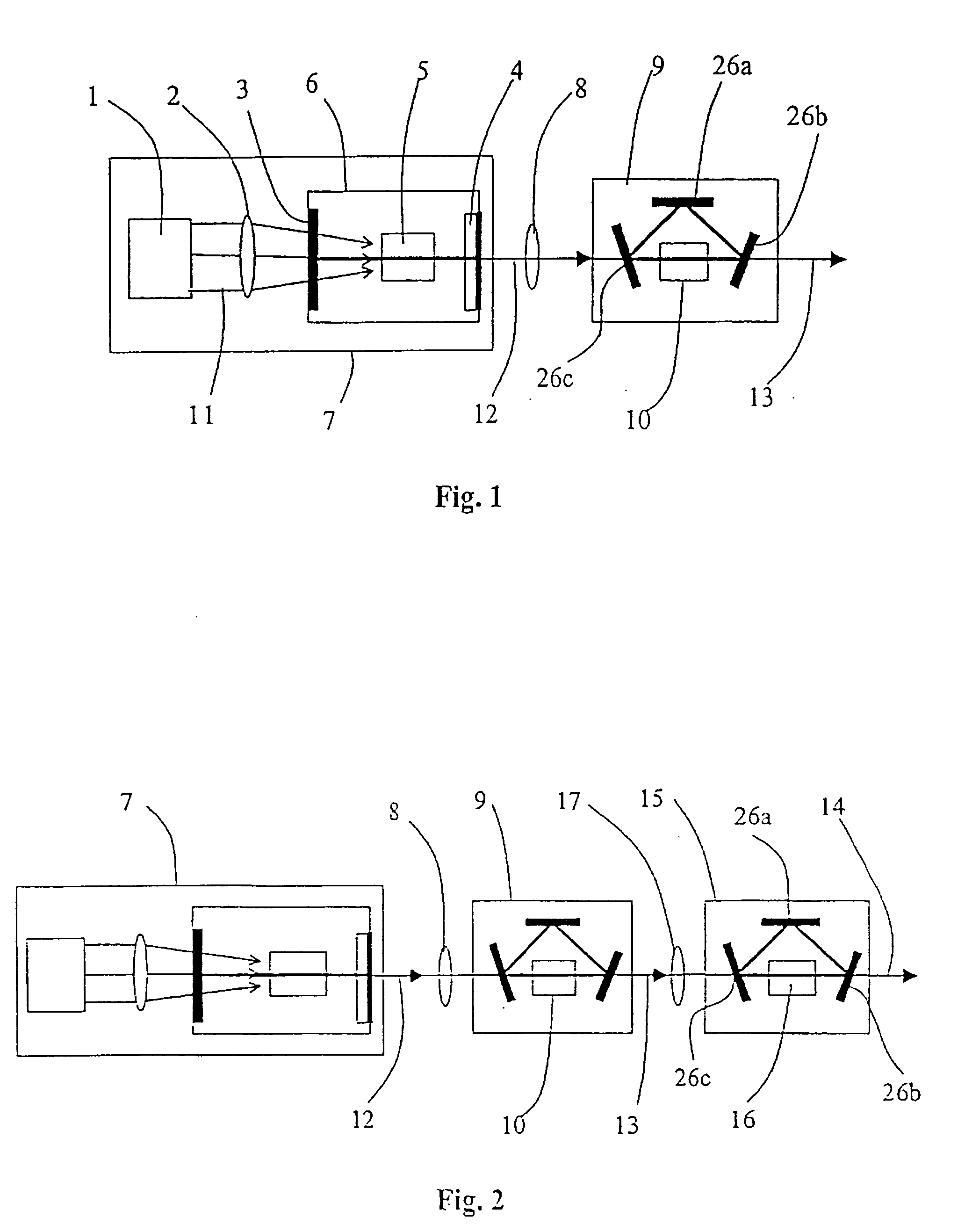Laser resonator and frequency-converted laser
a laser and frequency conversion technology, applied in the field of lasers, can solve the problems of unmanageable equipment configuration, unwanted frequency occurrence in laser beam, noise in laser beam intensity, etc., and achieve the same level of efficiency in frequency conversion and achieve the effect of the level of efficiency achieved
- Summary
- Abstract
- Description
- Claims
- Application Information
AI Technical Summary
Benefits of technology
Problems solved by technology
Method used
Image
Examples
Embodiment Construction
[0069] The invention provides in particular an optically pumped, specifically a diode-pumped, continuous solid-state laser with external frequency conversion. A laser crystal as an active medium in a laser resonator produces a primary laser beam with a fundamental wavelength, from which one or frequency-converted laser beams are produced by means of external resonant frequency conversion. A high level of overall efficiency and a very low noise level are achieved with relatively little complication and expenditure by exciting precisely two longitudinal laser modes in the laser resonator. In an embodiment of the invention the frequency-converted radiation includes three or more frequencies. In another embodiment of the invention the frequency-converted laser radiation contains only one single frequency and therefore corresponds to the radiation of a monomode laser. That will be discussed in detail in the description hereinafter of the embodiments by way of example.
[0070] The embodime...
PUM
| Property | Measurement | Unit |
|---|---|---|
| frequencies | aaaaa | aaaaa |
| modulation frequencies | aaaaa | aaaaa |
| length | aaaaa | aaaaa |
Abstract
Description
Claims
Application Information
 Login to View More
Login to View More - R&D
- Intellectual Property
- Life Sciences
- Materials
- Tech Scout
- Unparalleled Data Quality
- Higher Quality Content
- 60% Fewer Hallucinations
Browse by: Latest US Patents, China's latest patents, Technical Efficacy Thesaurus, Application Domain, Technology Topic, Popular Technical Reports.
© 2025 PatSnap. All rights reserved.Legal|Privacy policy|Modern Slavery Act Transparency Statement|Sitemap|About US| Contact US: help@patsnap.com



